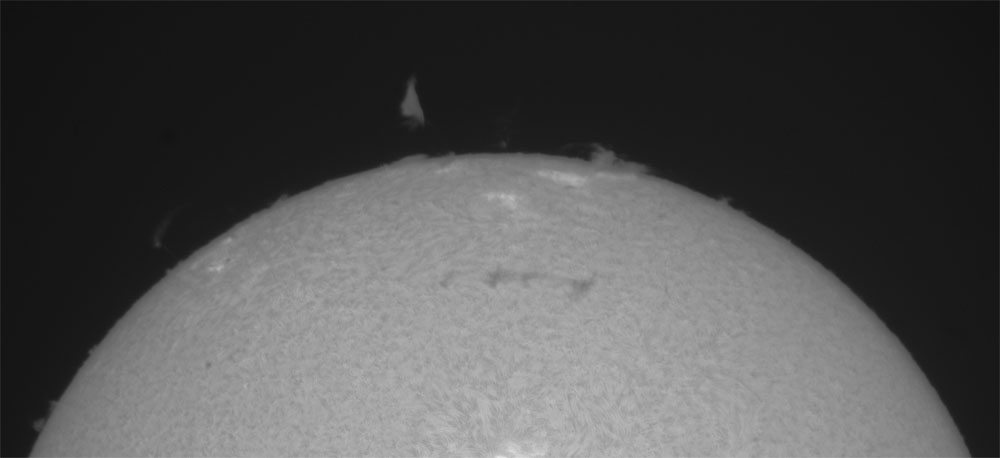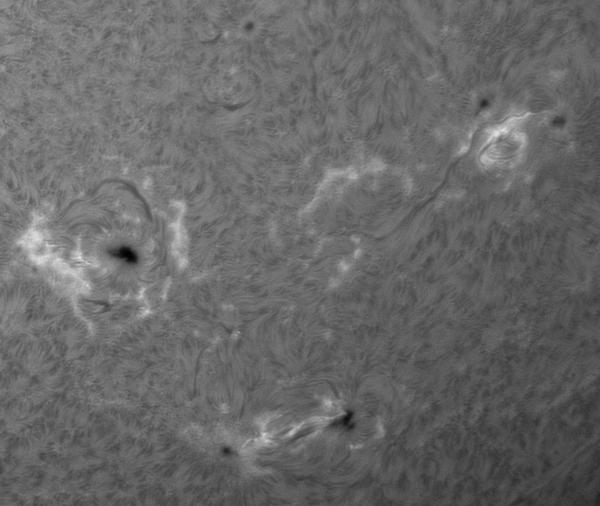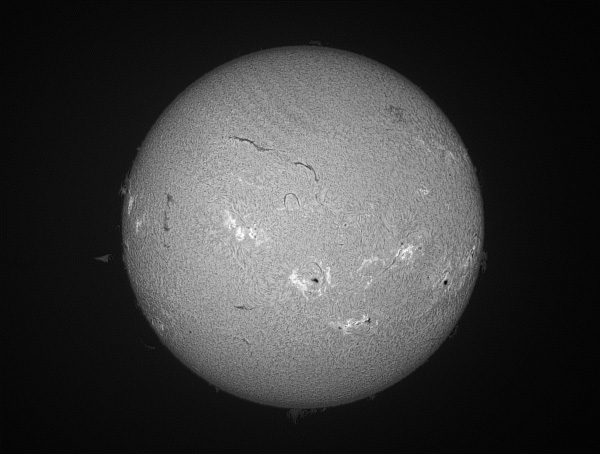August
26, 2024 was an experiment in capturing data for a
high-resolution animation of the sun.
With most of my prior solar imaging, I would capture a full disk
of the sun at short focal lengths, then add a Barlow (think
tele-extender for you photographers) for longer focal length
images (i.e., zooming in on interesting features). I would in
recent months capture data for an animation of a zoomed-in
feature of interest. Only to find out nothing significant
happens in that area. Meanwhile, I miss soemthing interesting
that is happening on another part of the sun.
So why not capture the whole disk of the sun at higher
resolution (longer focal lengths) using a camera with a chip big
enough to capture the whole disk? I happened to have such a
camera (ZWO ASI1600); this is normally a deep-sky camera but is
capable of capturing the type of data (video files) for solar
imaging. Why not I give that a try?
This page contains the results of 46 separate captures. Each
capture is a 250-frame video, and each capture was spaced one
minute apart. The best 25% frames of each video were stacked and
processed to form a final image. Do that for all 46 videos. Take
the resulting 46 images and combine them into an animation, and
here ist he result.
I originally hoped to capture 60 frames for an hour's data worth
of animation, but I ran low on disk space. The videos are HUGE.
One big advantage of this approach is that I can crop areas of
specific interest to create smaller animations from the main.
For instance, here is an area of prominences on the east edge of
the sun (rotated 90 degrees for presentation). First of all, the
floating prominence is quite interesting to begin with. If you
zoom in to that prominence though, you'll see little
(relatively!) bits of plasma raining down from that floater to
the sun's limb (87MB).
All images were taken with the aforementioned ZWO ASI1600MM Pro
(I even learned how to turn the camera's cooler on, not that it
really needed, but this in case) camera. The solar telescope
used is a double-stacked Lunt LS80MT 80mm solar scope with
BF1800 blocking filter. The nosepiece of a Barlow (Astro-Tech
2x) was inserted into the camera's nosepiece to boost
magnification, and this assembly threaded on to a Daystar tilter
to minimize Newton's Rings. All ridiing on an Astro-Physics
AP1200GTO mount. |

Click on the thumbnail to see the
animation |
| Here is
a still from the above animation: |

Click on the thumbnail for a full size image |
| Here you
can see a tighter view of the area of the sun showing off active
regions AR3799, AR3796, AR3798 and AR3800 (30MB). Please ignore
the "dancing protozoa-like creatures" at the lower corner of the
animation; I unfortunately forgot to take flats (special
clean-up images) that should have gotten rid of those artifacts. |

Click on the thumbnail to see the
animation |
| And a
single snapshot from the above animation: |

Click on the thumbnail for a full size image |
| And here
is the HUGE animation of the entire disk of the sun. This is at
full resolution (not resized/shrunk). This is 325MB in size,
please be patient downloading the image if you are on a slow
connection. The wave-like "stripes" (Newton Rings?) at the top
of the disk of the sun are artifacts from the missing "flats"
alluded to earlier. |

Click on the thumbnail to see the
animation |
| And a
single snapshot from the above animation: |

Click on the thumbnail for a full size image |
